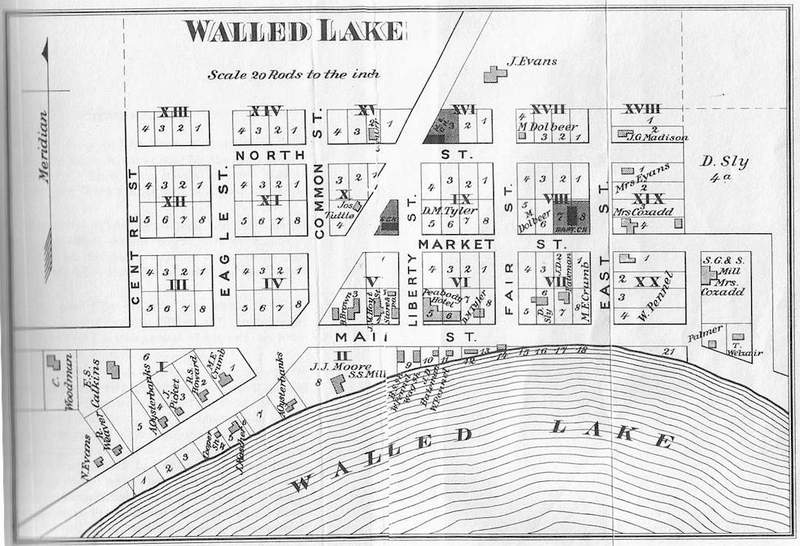
History of Walled Lake
From it's early days as a sleepy little village trapped in time ... to it's gaining international recognition as a mecca for recreation, leasure, and entertainment, Walled Lake has a colorful and interesting history. Take a journey through time below and enjoy the historical story of Walled Lake.
Be sure to visit the History Photos page for more history pictures
Pre-Settlers ? - 1824:
Walled Lake's earliest inhabitants were the native Americans...specifically the Potawatomies. The Potawatomi and other Algonguian indians were in Michigan centuries before the white man. They were non-hostile people who relied on the fertile land and waters of southern Michigan to farm, fish, and hunt.
Accounts from early settlers tell us that there were as many as 300-400 Potawatomi camped along the shores of Walled Lake. Reports of indian "green corn" festivals took place on a cleared piece of land near what was to become the Village and later the City of Walled Lake. The indian village or camp grounds were located on the northwest and west shores of the lake...where legends also tell of indian burial grounds.
Perhaps this was a favorite spot because of the clean fertile waters...or because it was near one of the main indian trails that crisscrossed our country; the Shiawasse Trail. Or could it have been the strange stone wall formations on this unique lake? Whatever the reasons, Walled Lake was definitely the home of these early people and is full of indian legend and lore.
The Rejuvenation 1979 - Present:
In 1979 the cities of Walled Lake and Novi realized the dire situation of the lake and the need to clean it up. City sewers were installed completing the sewage removal method around the entire lake. Within five years the waters were noticably cleaner as wildlife once again returned and flourished. Because of its natural spring source, the lake itself did all the clean-up work...it only needed to be given the chance. By 1985 it had become one of the cleanest lakes in Oakland County...and was again attracting attention. From the 1980s to present day... a continuous and dynamic change can be noticed along the lakeshore. The old cottages of the past are being renovated or torn down making way for new homes.
Today Walled Lake is a thriving lakeside community. Its residents still enjoy the small town feeling with the convenience of being close to fine dining, shopping, entertainment, and major expressways.
Surprisingly, what attracted the earliest inhabitants to Walled Lake centuries ago, are the same reasons people are attracted today...clean, warm waters...an area that meets all their needs...while being close to major travel routes.
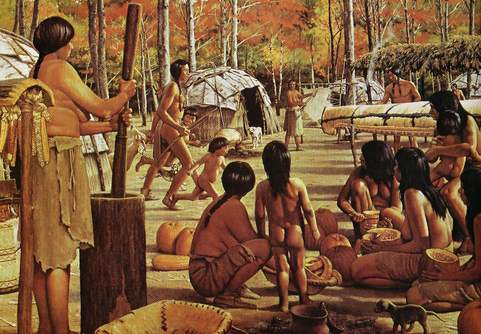
 | ||||||
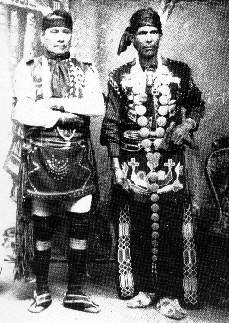
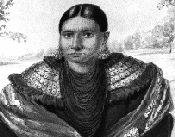
 | ||||||
 | ||||||
Typical Potawatomi village
Early Settment 1825-1836:
In June of 1825 a bold settler left the small village of Farmington and pushed into the wilderness miles past the last settlement. He arrived on the east shore of a sparkling lake and noticed what appeared to be a stone wall along the west bank. His name was Walter Hewitt and he was Walled Lake's first settler. He built a log home on the high land (near the present day cemetary) but only stayed a year, moving to Ypsilanti May 1, 1826 where he later was elected to the State Legislature. Although he didn't stay long, he led the way for a continous trickle of pioneers. Most of them originated from New York all searching for inexpensive land which the Government was selling for $1.25 per acre.
In 1826 Bela Armstrong arrived and a few years later Cornelius Austin...both veterans of the War of 1812. Each year brought two or three new additions to the settlement. Eliphat Hungerford came in 1831 and was known to have planted the first apple orchard in the community.
In 1830 two men, Pentice and King, arrived and established an indian trading post called "white rock". It was located on the lakeshore near the present day 14 Mile and East Lake Drive area. The Potawatomies were good neighbors...often helping the early settlers by giving them venison, fish, and berries. They were said to have been inoffensive, honorable, and respected the rights of the white man. In 1833 the Potawatomi left Michigan for Missouri in accordance to the new treaties.
This small settlement, located on the high land northwest of the lake, was the home to Walled Lake's first school (1833), the first store (1833) and the first church (1837). It was cut out of the wilderness and had no roads to speak of...only indian trails. However...things were soon to change.
Potawatomi woman
One of the mosted noted names of the time was that of Dr. James M. Hoyt. Arriving in Walled Lake in 1840, Dr. Hoyt was the sole village doctor for over 40 years. He would often make home remedies because medication was too far away or too expensive. He looked after all the citizens of the village and often wouldn't charge for his services. Dr. Hoyt was more then just the town physician; he also became the Township Clerk, Township Supervisor, School Inspector, and State Senator.
Another notable citizen was the Honorable Joseph B. Moore, Justice of the Michigan Supreme Court. The Moore's arrived in the village in 1858 when Joseph was only thirteen. He worked in his father's lumber mill and helped construct the new "Stonecrest" schoolhouse in 1860. He later taught in the very same schoolhouse from 1868-69.
The stone schoolhouse was built on the same site as its 1836 predecessor and still stands today. It was constructed out of native "hard heads" or boulders which had been broken by hand and faced with stone hammers. For thirty five years this stone schoolhouse served as the village's only school. But it became impossible to keep up with the modern ideas of teaching in a one-room, ungraded school.
In 1895 a frame school with two rooms was constructed in the western part of the village. The structure still stands today and has been home to the Walled Lake Masons since 1922.
At a time when the nation battled a Civil War and experienced growth from the Industrial Revolution, the Village of Walled Lake saw very little change. It was largely unaffected by outside forces...maintaining its rural, small town community. In 1877 it only had a population of 400...but soon this would all change.
The Village of Walled Lake 1836-1900:
In a survey by Harvey Park in 1834-1835, a State territorial road would be developed linking Pontiac and Ann Arbor passing right through Walled Lake (known today as Pontiac Trail). Jesse Tuttle settled in the area in 1830...east of the early settlement (on the corner of present day Pontiac Trail and Walled Lake Drive). He saw the development of this highway as being a growth opportunity for Walled Lake. So in 1836 he platted his farm land into streets and blocks that would soon become the Village of Walled Lake.
After the first school burned down, a larger one was erected in 1836...but this time in "town" (on the spot where the current day "Stonecrest" still stands). Soon another store was opened across from the Tuttle residence and in 1840 the Pioneer Inn was built. The Pioneer Inn served the needs of weary travelers that found their way through the wilderness along the indian trails. The Inn also became the center of the Village...with stores and homes sprouting up around it. In 1854 a new Baptist church was constructed on the corner of Market and East streets. The original Baptist church of 1837 (near the cemetary) had become too far for members to reach comfortably, especially in the winter months. It was clear that the community was now shifting from the site of the early settelment to the growing Village along the northeast shoreline of Walled Lake.
In its hay day, Walled Lake was one of the most popular destinations in all of Michigan...boasting bath houses, beaches, two large water slides, two board walks, speed boat rides, summer cottages, an amusement park, and a grand ballroom where the most popular performers of the day could be seen.
The sleepy little village of Walled Lake had, almost overnight, experienced overwhelming fame as it was thrown into the lime light and flooded with millions of visitors. What was to become of it, now that the "golden age" was gone?
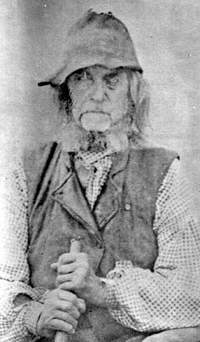
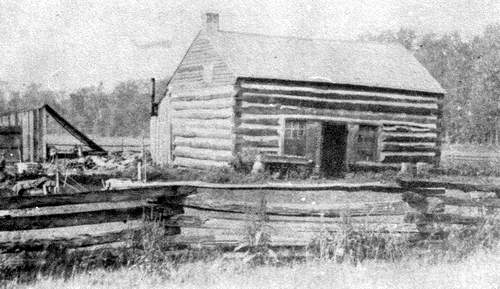
 | ||||||
 | ||||||
Typical log home of the early settlers
Cornelius Austin - Walled Lake's third white settler
1873 plat of Walled Lake - virtually unchanged from Jessie Tuttle's original plat
Click on picture for larger view

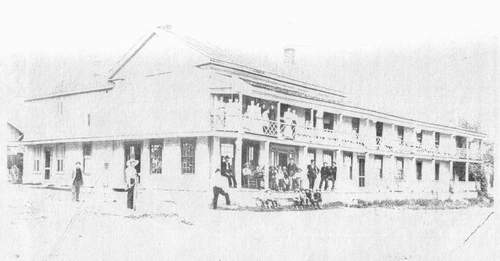
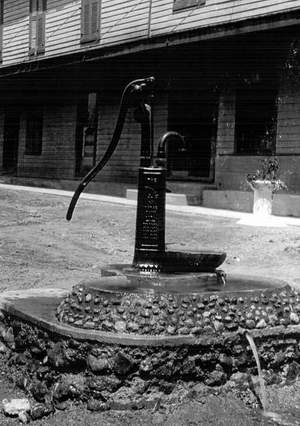
 | ||||||
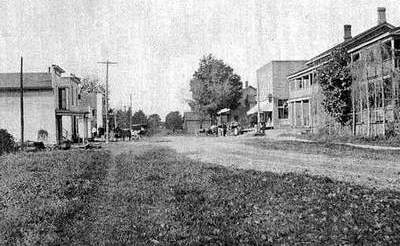
In the middle of the village (Liberty and Main streets) stood the "Town Pump" which welcomed the tired traveler or the doctor riding home from a midnight house call. A single tin cup hung from a nail, which was used by all the village people. School children would fill pails from it on their way to school and travelers would stop and water their horses there.
The Village of Walled Lake was the typical small community of the times...it had its own blacksmith, cooper, harness maker, wagon maker, cobbler, carpenter, mason, and doctor. It was a community where everyone knew each other and helped each other in times of need.
The General Store was noted as one of the finest in all of Oakland County. It not only offered the townspeople goods, but served as the first Post Office and its proprietor, Benjamin Brown, was the Justice of the Peace and would occasionally pull teeth as a service to his friends.
In the nearby countryside, farms were settled which formed the backbone of Nineteenth century America. James Welfare, who came from Sussex, England, established his farm along the east shore of Walled Lake. The farm of John Welfare ran along what is now known as 14 Mile Road. North, and farther east, was the Reverend Enoch Welch's farm. West of the village were the farms of Morse, Bentley, and Erwin. The agricultural industry was an important part of rural America during this time period. The Civil War years (1861-1865) were the most prosperous for the farmers...as the Union army required large amounts of wheat and oats.
 | ||||||
Walled Lake's Golden Years 1900-1968:
Shortly after the turn of the century, the rural character of Walled Lake began to change. With the Michigan Airline Railroad coming through the village in 1883, and the solid gravel roads to Pontiac and Detroit by World War I, Walled Lake was now a crossroads with the rest of Michigan.
Being the largest and closest lake to Detroit, and with the advent of the automobile, Walled Lake soon became a favorite destination for people escaping the industrialized cities for recreation. In the early 1900s, cottages and permanent residences began to dot the shoreline as Walled Lake grew in popularity.
With the growing population, the two-room frame schoolhouse was now incapable of handling the education needs of the village children. This was also the age of consolidation of rural schools resulting in the construction of the large brick school. The school opened in 1922 serving the needs of the new consolidated school district.
Enterprising residents, Jake and Ernie Taylor, saw the attraction of the lake and built a small dance hall on the south end of the lake in 1919. They advertised the hall with signs on the back of automobiles and attracted 1000 people nightly.
In 1921 Herman Czankusch developed a waterfront cottage community which included another dance hall, water slides, and bath houses. He called his development Cenaqua Shores; selling 30' lots for $350 each. Due to heavy competition from the Cenaqua Shores dance hall...the Taylors sold their dance hall to LouisTolettene in 1923. The Tolettenes invested heavily and moderized their dance hall renaming it the Casino Shores Pavilion. The Casino Shores Pavilion was now attracting over 2500 people on weekend nights.
The small village of Walled Lake had been changed dramatically. Thousands of people and bumper to bumper traffic was now the norm on Sunday afternoons. Those who toiled six days a week in the city factories sought relaxation on their only day off. The once quiet Sabbath day of the small village was gone forever. The most telling sign that the sleepy village had disappeared, was the removal of the "Town Pump" in the late 1920s. Surprisingly enough, Walled Lake still had not seen it's most popular and famous days...a fierce battle over attracting visitors would soon bring even greater fame and crowds to the shores of Walled Lake.
The "Town Pump" as it appeared in 1909 stood at the center of the village
The Pioneer Inn built in 1840 became the focal piont of the growing village
Sources:
"The Story of a Village"; Henry O. Severence
Oakland County Book of History; Arthur Hagman
History of Oakland County, 1874; Durant & Pierce
1994 video, "Walled Lake Casino-Amusement Park Documentary"
Walled Lake City Library - History Archives
Click on the areas below or page down to learn about Walled Lake's history
?-1824 / 1825-1835 / 1836-1900 / 1901-1968 / The Casino Pavilion / The Amusement Park / 1969-1978 / 1979-Present
 | ||||||
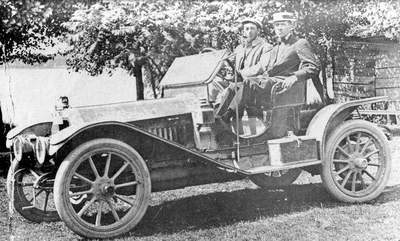
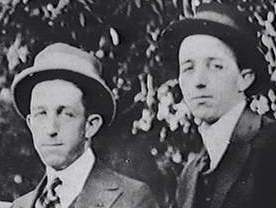
 | ||||||
 | ||||||
 | ||||||
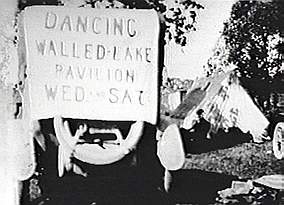
 | ||||||
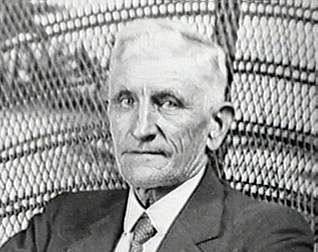
The automobile changed Walled Lake forever
Above; Ernie Taylor in a 1909 Olds with Walled Lake in background
Jake & Ernie Taylor built the first dance hall in 1919
Herman Czankusch
Developed and sold 30' lake shore lots
Walled Lake's Casino Shores Pavilion
The popularity of the dance halls prompted Louis Tolettene to build what he called "the best ballroom in the state of Michigan". The new Casino Shores Pavilion opened its doors on April 13,1925. The lavishly decorated ballroom boasted a 120' x 140' polished maple dance floor and a hand painted latice ceiling.
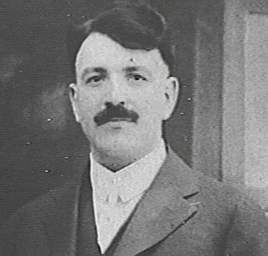
 | ||||||
Louis Tolettene
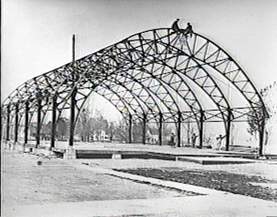
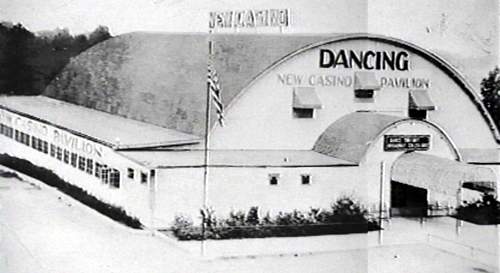
 | ||||
 | ||||||
The New Casino Pavilion under contruction

 | ||||||
The New Casino Pavilion as it appeared on its grand opening
Dr. James M. Hoyt served as the community's doctor for more then 40 years
Main Street circa 1900 showing little change
The new Casino Pavilion attracted the most popular bands of the time as thousands crowded into the dance hall every weekend. In 1929 the country was thrown into the Great Depresssion...however, the Casino Pavilion kept its doors open and began radio broadcasts on location. This is what put Walled Lake on the map...listeners from around the country would tune in and listen to the ballroom music emanating from the shores of Walled Lake.
As the "Big Band" era began...prominent musicians from around the country came to perform at the "Walled Lake Casino"...as it became known. Some of the famous names that performed in Walled Lake at the time were...Tommy Dorsey, Red Nichols, Glen Miller, Louis Armstrong, Sammy Kay, Guy Lombardo, and Lawrence Welk. Lawrence Welk played the Casino frequently and even bought a cottage on Walled Lake so his family could be with him as he performed during the summers. Attendance at the Casino was typically 2500 people per night with the Ralph Flanigan Band setting an all time record of 4001 on a Saturday night in the late 50s.
With the new popularity of TV, the "Big Band" era died...and with it the many ballrooms around the country. However, the Tolettene family kept the Walled Lake Casino alive by changing with the times.
 | ||||||
Walled Lake's Amusement Park
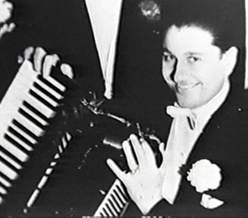
 | ||||||
Lawrence Welk not only played the Casino but bought a cottage on Walled Lake
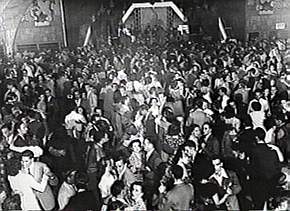
Shoulder to shoulder dancing was the norm
 | ||||||
As the Big Bands faded away in the 50s... the live entertainment of the day was now vocal groups. The Walled Lake Casino began hosting such names as the The Four Freshmen, The Kingston Trio, Mel Torme, Teresa Brewer and Bonnie Baker.
In the late 1950s, attendence at the Casino dwindled, forcing the Tolenttenes to close the ballroom and later selling it in 1962. New owner, Red Cramer, installed heating for year-round dancing...and the new format was...Rock & Roll!
Local Rock & Roll DJ, Lee Allan, began doing broadcasts and dance shows live from the Casino...once again filling the dance hall with capacity crowds. Both local bands and marquee names performed at the Casino. A few of the most memorable shows were the performances of teen idol Fabian, who took the stage to an overflowing fenzied audience...one of the first public appearances of 12 year old "Little" Stevie Wonder... and the much anticipated performance of Chuck Berry, the first after his release from jail.
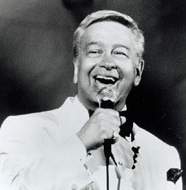
 | ||||||
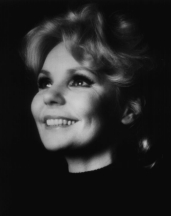
 | ||||||
Mel Torme and Teresa Brewer both sang at the Casino
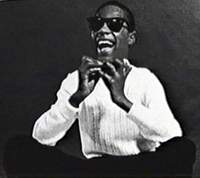
 | ||||||
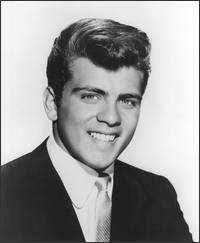
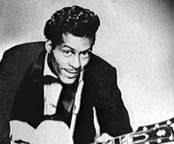
 | ||||||
 | ||||||
Fabian
The Walled Lake Casino had endured World War II, the Great Depression, and the demise of the "Big Band" era...outlasting other ballrooms by over a decade. For more then 30 years it attracted audiences enjoying the sounds of ballroom music, the big bands, jazz, pop, and rock & roll. After a storied history, the Casino sadly couldn't endure a fire on Christmas Day, 1965. Although fire fighters fought the blaze gallantly...the Casino couldn't be saved, signaling the end of a Walled Lake landmark.
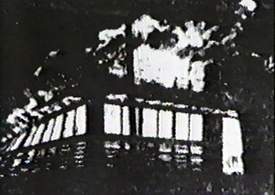
 | ||||||
Stevie Wonder
Chuck Berry began his come-back at Walled Lake
Fire detroys the Casino in 1965
 | ||||||
When the Walled Lake Casino was built in 1929 Heman Czankusch knew he couldn't compete and sold his dance hall. Not to be out-done by his competitor, Czankusch had a new idea...to build a roller coaster at Walled Lake! He leased his land to Fred W. Pierce, who began construction on the roller coaster in February, 1929.
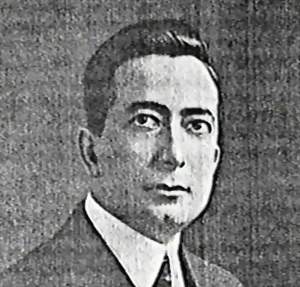
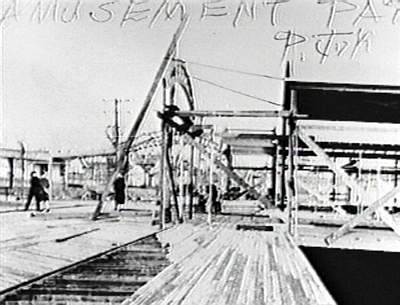
 | ||||||
 | ||||||
Fred W. Pierce brought the amusement park to Walled Lake
Construction of the roller coaster in 1929
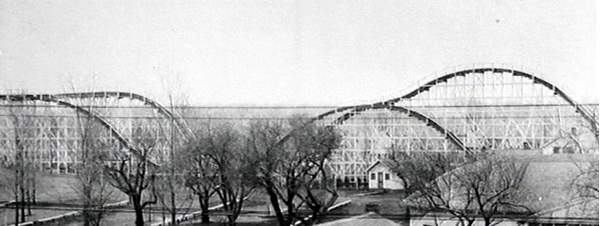
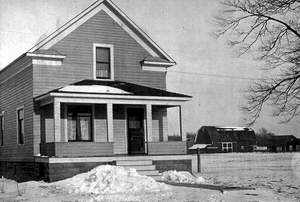
 | ||||||
The McKnight home was built on the lakeshore, farms can be seen in the background
 | ||||||
The "Flying Dragon" was the main attraction at the new Walled Lake Park
The new roller coaster was named the "Flying Dragon". Fred Pierce had built over 27 roller coasters around the country...but the "Flying Dragon" was said to have been the best roller coaster he ever built. The coaster was the focal point of the new Walled Lake Park.
The Grand opening of Walled Lake Park was on Memroial Day, 1929...and was a huge success from the start. People came from miles around to enjoy the park's many attractions.
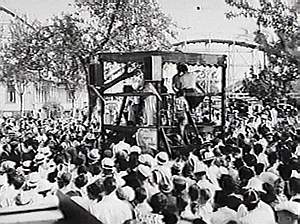
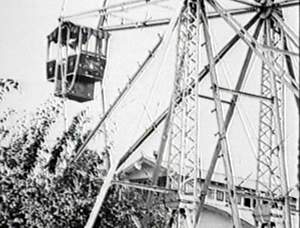
 | ||||||
 | ||||||
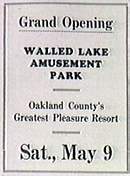
 | ||||||
Picnics were a major source of income for the park...many local schools, businesses, and organizations would hold group outings there. For many, bringing a picnic lunch to Walled Lake had become a summer tradition.
The park also had its own bath house and beach where park goers could swim in the shallow, warm waters of the lake. For the more daring at heart, there was also a two-story water slide...where swimmers would climb a tower and slide into the lake on wooden toboggans.
Both the Park and Casino had water slides...but the slides proved to be dangerous having frequent accidents. Finally the tragic death of an 8 year old Detroit girl forced the slides to be closed and dismantled.
Extending out from the park were two 500' boardwalks where the thrill seeker could get a speed boat ride for fifteen cents. The popular boardwalks, beaches, and park were crowded every weekend during the summer months.
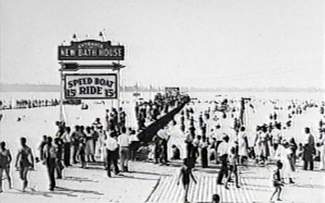
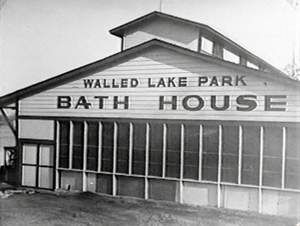
 | ||||||
 | ||||||
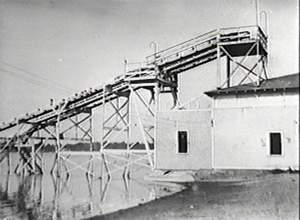
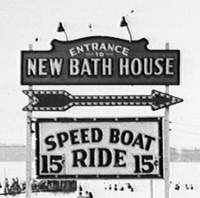
 | ||||||
 | ||||||
One of two waterslides that were eventually closed down
Crowded boardwalks and beach
By the 1950s, Walled Lake Park was well established and was one of Detroit's most popular summer spots for the entire family. The park offered something for every age group with rides such as the Tilt-A-Whirl, Dodge-Em cars, the Flying Scooters, and the Pretzel.
The large group picnics were more popular then ever with the park offering many different games and events. Often the park's guests would be treated to special exhibits that were held on the park's grounds. Military vehicles, armored cars, and tanks were on display and would demonstrate manouvers for the crowds.
On hot summer days the beaches and bath houses were still a big attraction. Both the Casino and the Park installed playground equipment in the shallow water for the children. Walled Lake Park was as popular as ever and was now attracting 25,000 visitors daily!
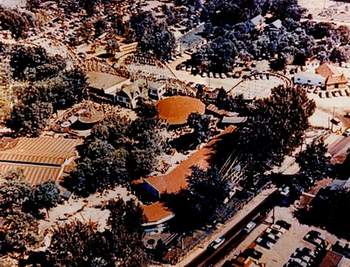
 | ||||||
Walled Lake Park as it appeared in the 1950s
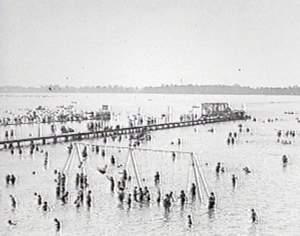
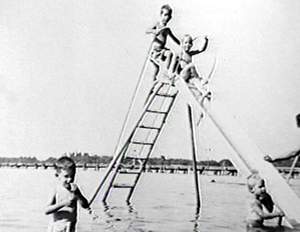
 | ||||||
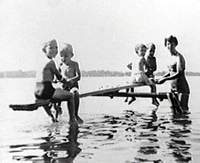
 | ||||||
 | ||||||
With the emergence of the Detroit area Metro Parks, the popularity of television entertainment, and the advent of neighborhood pools...attendance at the park declined in the early sixties. The Pierce family sold the park in 1962 to the Wagner brothers...who also owned Edgewater Park. The Walled Lake Park was now beginning to show its age and the Wagner's began moving some of the rides to their newer Edgewater Park, which was closer to the city of Detroit. After the 1968 season, the Walled Lake Park was finally closed and dismantled. And yet another landmark representing the "golden years" of Walled Lake was gone.
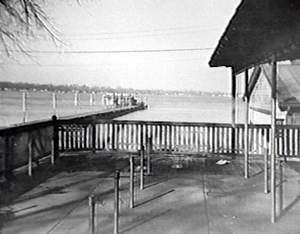

 | ||||||
 | ||||||
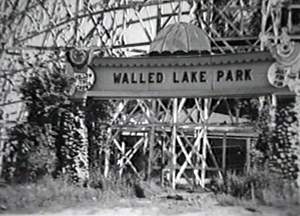
 | ||||||
Abandoned rides
Empty beaches
The overgrown entrance of the once popular park
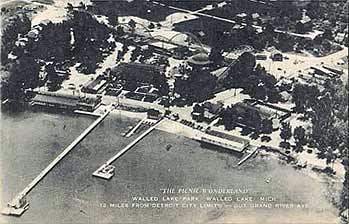
 | ||||||

 | ||||||
"Stonecrest" as it appears today
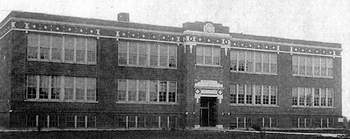
 | ||||||
 | ||||||
The new consolidated district school as it appeared in 1924
The Aftermath 1969-1978:
After the amusement park had been quieted...and the bands stopped playing...and the scores of summer visitors stopped coming, Walled Lake seemed strangely unaffected by it all. It maintained its small town flavor as witnessed by the corner hardware (Melvin-Fitzgeralds), the wood-floored Penny Lake Grocery, the Walled Lake Drive-In, and the original Lakeside Market perched high on the hill. The business district had now shifted along the Pontiac Trail corridor and up Maple Road...but structures from the early 1900s still stood on Main Street.
The outlying areas were still basically rural with horses, barns, and farms still a common site. It was as if the 40 years of "carnivalism" had never happened. Walled Lake's character was strikingly similar to that before the turn of the centrury...when events such as Civil Wars and Industrial Revolutions did little in changing the face of this unique community.
The lake itself, however, wasn't as lucky. The pressure of millions of people visiting over 70 years badly polluted the once sparkling waters of Walled Lake. The early cottages that lined the lake had little or no sewage treatment method. The amusement park, which attracted 25,000 people daily at its peak, was said to have had a septic system for it's 50 toliets on the hill. Inspectors at the time sadly discovered that this was not the case. The lake was no longer fit for swimming and had adversley effected the fish and wildlife.
Unfortunately, outside forces had caught up to Walled Lake after all... and had crippled the one thing that had attracted people and wildlife here for centuries.
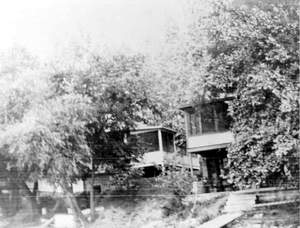
 | ||||||
Crowded cottages of the early 1900s had no septic systems
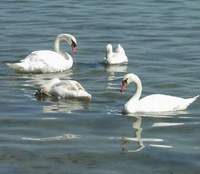
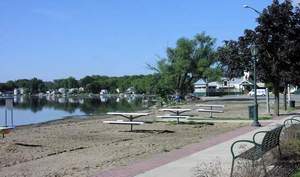
 | ||||||
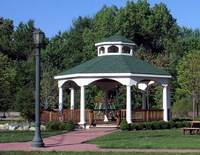
 | ||||||
 | ||||||
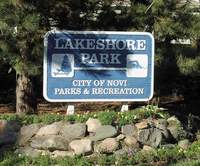
 | ||||||
A very Special Thanks to the Walled Lake City Library for the use of their historical archives
visit them at www.walledlakelibrary.org
This history brought to you courtesy of Lori Marshick...your neighbor, your realtor
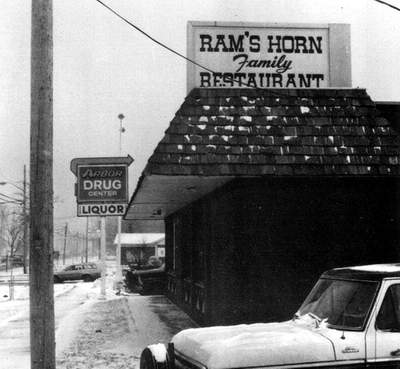
 | ||||||
View from Maple Road in 1970s
 | ||||
Copyright © 2000-2012 Lori Marshick, Inc. All Rights Reserved
Questions about this site should be directed to Webmaster
...your source for Lakes Area real estate and information
www.lorimarshick.com
